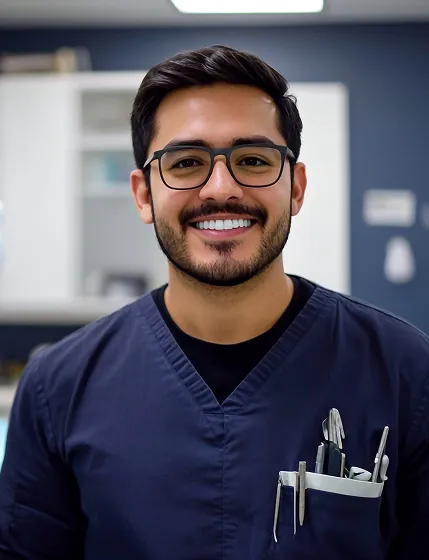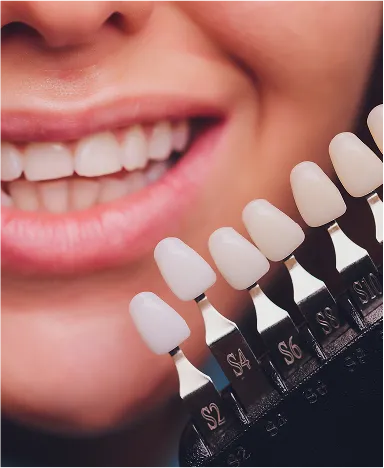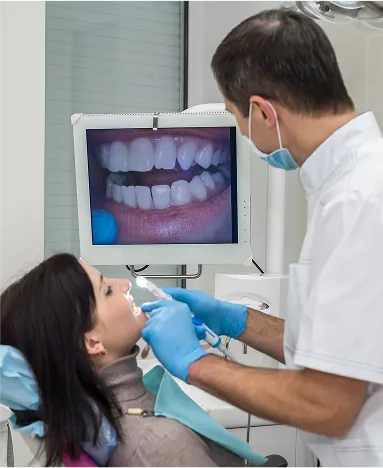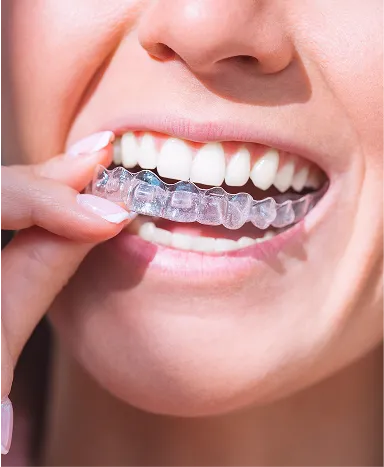
Passionate For Your Smile Perfection
Advanced Dental Care In
San Francisco
Experience top-tier dental treatments from Expert Dentists in San Francisco committed to your oral health and aesthetic goals.

Our Insights
State-of-the-Art Dentistry with a Personal Touch
As trusted dentists in San Francisco, we combine expertise and innovation to deliver exceptional care, ensuring precision, comfort, and optimal oral health.
Expert Team with Years of Experience
Our skilled Dentist in San Francisco stay updated with the latest techniques and advancements, providing top-quality care with precision and attention to detail.
Gentle Approach to Dentistry
We use careful techniques and modern methods to make every treatment as painless and stress-free as possible, helping even the most anxious patients feel at ease.

Dr. Aja Hall
Dentist at SF Aesthetic Dentistry
Flexible Payment Options
We offer various payment plans and financing options to help fit treatments into your budget.
Emergency Dental Care
We’re here for dental emergencies, providing prompt care for sudden pain or damage.
Personalized Treatment
We empower patients with clear guidance, answering questions and ensuring a healthy smile.
Meet Our Team
Dedicated Experts Committed to Your Oral Health
Get to know the dentists and staff who make your visit comfortable and effective.

Dr. Aja Hall
(DDS)
Dr. Aja Hall was born and raised in San Francisco, California. She graduated Magna Cum Laude and earned her Bachelor's of Science degree from the University of the Pacific in Stockton, CA. She received her Doctorate in Dentistry from the Arthur A. Dugoni School of Dentistry in San Francisco, CA in 2006. In addition to General & Cosmetic Dentistry, Dr. Aja Hall is an Invisalign Provider, providing aesthetic orthodontic treatment for teens and adults. She is an active member of the American Dental Association, California Dental Association, San Francisco Dental Association, and the American Academy of Cosmetic Dentistry.
Dr. Hall is committed to continually broadening her dental education by keeping up to date with the latest technologies, treatments, and research by attending and participating in advanced continuing education courses. In her spare time, Dr. Hall enjoys traveling and sampling cuisines from all around the world.

Dr. Victoria Waynick
Doctor of Dental Surgery (DDS)
Dr. Victoria Waynick is a general dentist at our practice, bringing a compassionate approach and a strong foundation in both psychology and oral health. Raised in the small town of Star, North Carolina, Dr. Waynick discovered her interest in dentistry through her early fascination with how oral care can impact overall well-being. She earned her Bachelor of Science in Psychology with a minor in Neuroscience from the University of North Carolina at Chapel Hill in 2017 and went on to complete her Doctor of Dental Surgery degree at UNC Adams School of Dentistry in 2023.
While in dental school, Dr. Waynick served on the executive board of the North Carolina chapter of the American Student Dental Association and was an active member of several organizations, including the Academy of General Dentistry, Delta Sigma Delta Honors Fraternity, and the Bridging the Gap program. She recently completed a one-year General Practice Residency at the University of Michigan, where she gained specialized experience treating special needs patients in a hospital setting.
Discounts & Offers
New Patient Specials
SF Aesthetic Dentistry: Elevating smiles in San Francisco with exceptional care for every new patient.
 $99
$99Exam, X-rays, and Cleaning
New patients only. Not combinable with other offers. Valid for regular cleaning. In absence of periodontal disease. Restrictions apply.
 FREE
FREECosmetic Consultation
Valued at $295 , Virtual and In-Person.
 FREE
FREEElectric ToothBrush
Valued at $100 , Restriction apply.
 $100OFF
$100OFFRefer a Friend
Any dental treatment. Restrictions apply.
Our Process
What Awaits You in Our Seamless Dental Visits?
Every visit is designed to be smooth, efficient, and stress-free at SF Aesthetic Dentistry. From the moment you walk into the final steps of your care, we prioritize your comfort and convenience.

Easy Ways to Secure Your Spot
Scheduling your visit at SF Aesthetic Dentistry has never been easier. Our seamless online booking system lets you choose a time that fits your schedule without the hassle of phone calls or long wait times.

Years of Experience
Happy patients
customer support
Our Top Services
Preventive, Restorative & Cosmetic Dentistry Under One Roof
At SF Aesthetic Dentistry, our Best Dentist in San Francisco offers a full range of services to keep your smile healthy and beautiful. Our expert care helps you achieve Long-lasting results.
Are you worried about consistent dental Issues?
Book An AppointmentOur Testimonials
Hear from Our Happy Patients
With a high patient satisfaction rate, our dentist in San Francisco has helped countless individuals achieve healthier and more confident smiles through expert care and top-quality treatments.

Join Our Family of Happy Patients
Experience the difference of exceptional dental care. Schedule a visit with SF Aesthetic Dentistry and take the first step toward optimal oral health.
New Patient $99 Special
SFAD Ins Plan (360/yr)
Our Smile Gallery
Browse our Patients’ smile makeovers.
Book Your Appointment Today
Let’s Take the First Step Toward a Healthier Smile.
Ready to schedule? Let’s talk!
Phone Number
(415) 781-2227
info@sfadentistry.com
Address
500 Sutter St. Suite #302
San Francisco, CA 94102

















